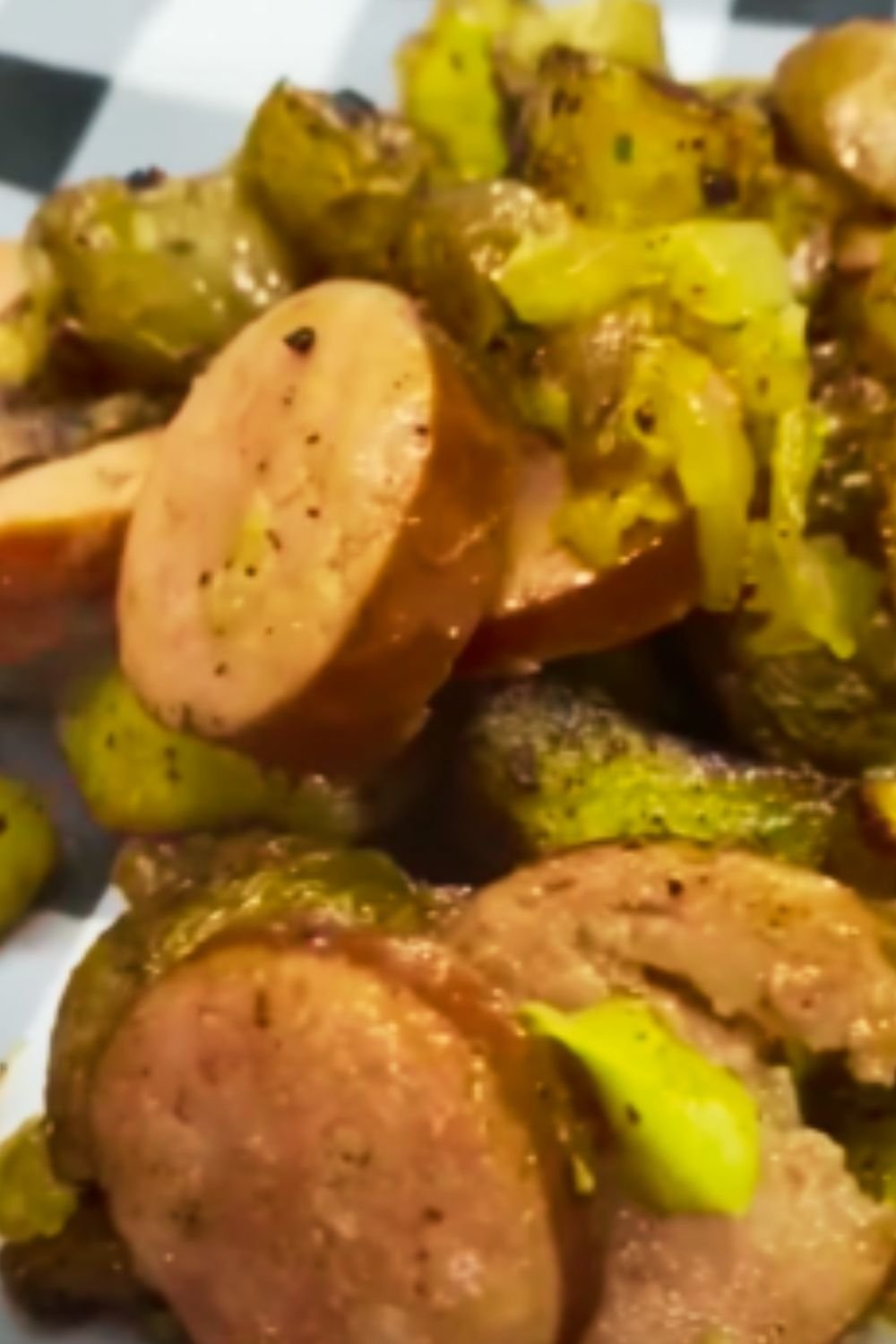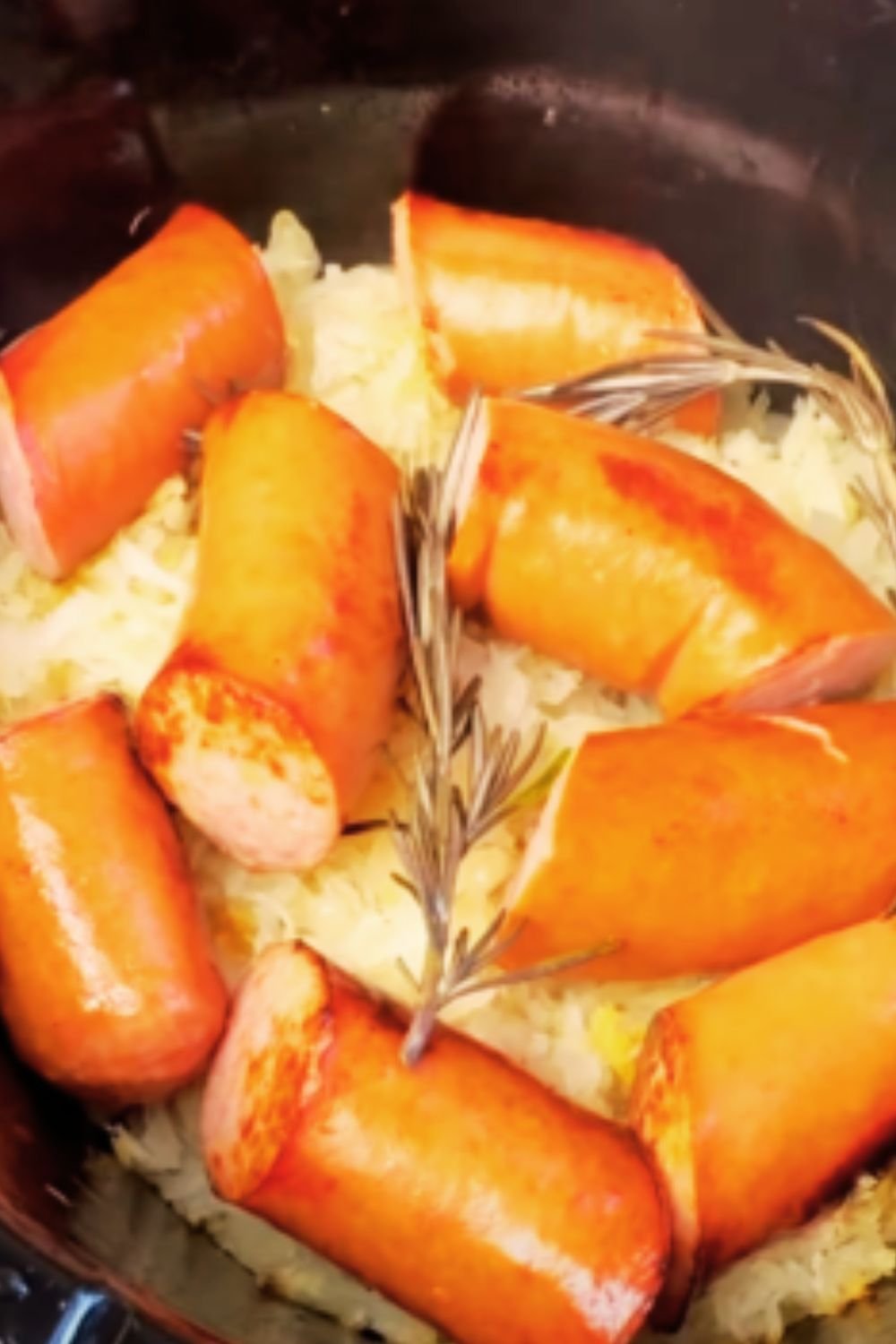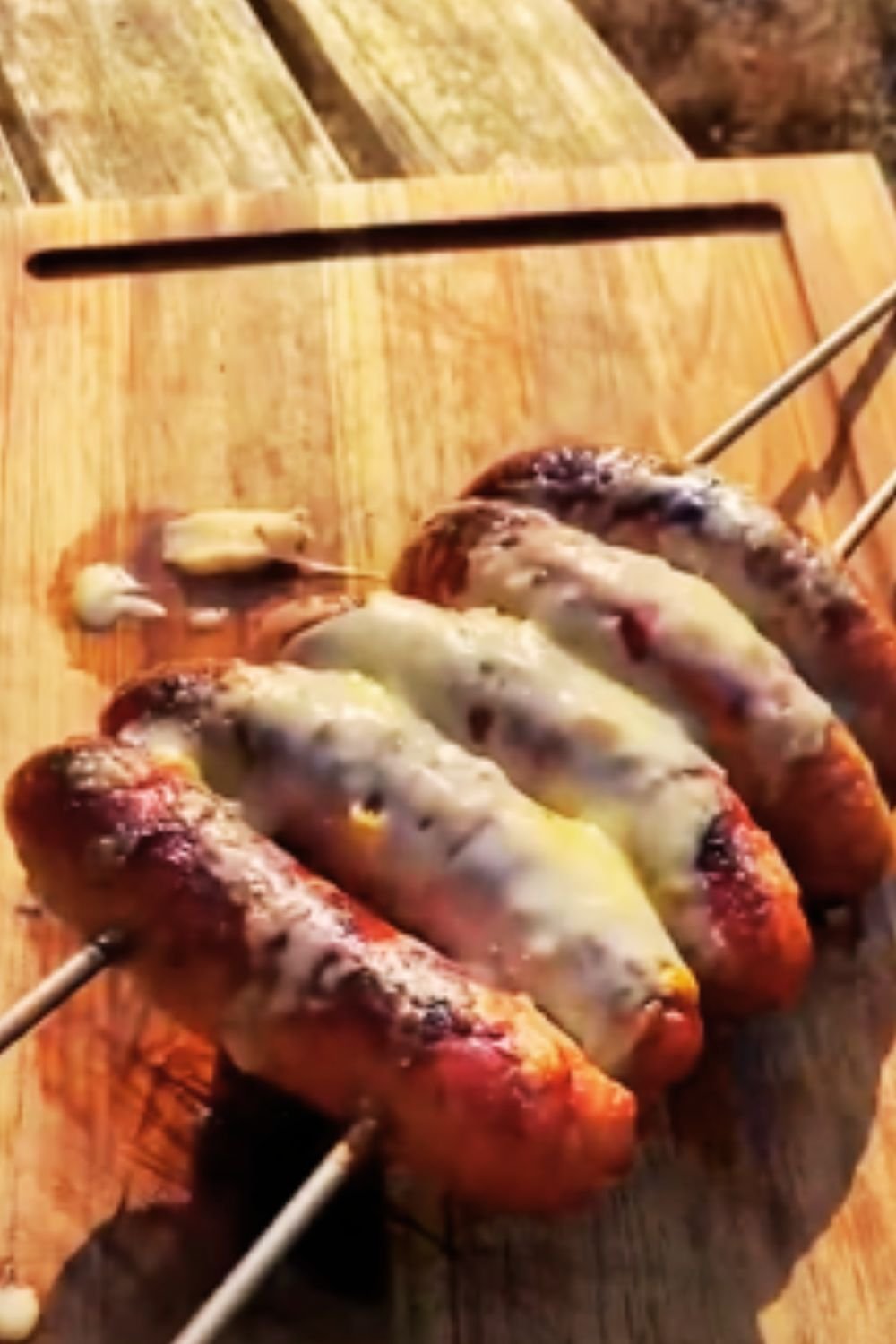There’s something deeply satisfying about hearty, one-pan meals that bring together simple ingredients to create something truly magical. As someone who juggles work, family, and everything in between, I’ve come to rely on these uncomplicated yet delicious recipes that deliver maximum flavor with minimal fuss. Today, I’m sharing one of my absolute favorites – a robust and comforting Potato Kielbasa Skillet that has become a staple in my household.
This recipe combines the smoky richness of kielbasa sausage with tender potatoes and a medley of vegetables, all brought together with a perfect blend of seasonings. What I love most about this dish is its versatility – it works brilliantly for a quick weeknight dinner, weekend brunch, or even as a crowd-pleasing option when you’re hosting guests without wanting to spend hours in the kitchen.
Why This Recipe Works
Before diving into the nitty-gritty details, let me explain why this particular combination works so wonderfully:
- One-Pan Wonder: Everything cooks in a single skillet, meaning fewer dishes and simplified cleanup.
- Balanced Meal: You’re getting protein, carbohydrates, and vegetables all in one dish.
- Adaptable: The recipe is incredibly forgiving and adaptable to what you have on hand.
- Budget-Friendly: Using accessible, affordable ingredients makes this an economical choice.
- Time-Efficient: From start to finish, you can have this on the table in about 30 minutes.
I discovered this recipe during a particularly hectic period in my life when I needed quick, satisfying meals that didn’t compromise on flavor. After several iterations and tweaks, I’ve perfected what I believe is the ultimate version – one that consistently receives rave reviews from family and friends alike.
Ingredients Breakdown
Let’s take a closer look at what goes into this delicious skillet:
| Ingredient | Quantity | Notes |
|---|---|---|
| Kielbasa sausage | 1 pound (about 450g) | Sliced into ¼-inch rounds |
| Yukon gold potatoes | 1.5 pounds (about 680g) | Cut into ½-inch cubes |
| Yellow onion | 1 medium | Diced |
| Bell peppers | 2 medium | Mixed colors, diced |
| Garlic | 3-4 cloves | Minced |
| Olive oil | 2 tablespoons | Extra virgin preferred |
| Paprika | 1 tablespoon | Sweet or smoked, depending on preference |
| Dried thyme | 1 teaspoon | Fresh can be substituted (use 1 tablespoon) |
| Red pepper flakes | ¼ teaspoon | Adjust according to heat preference |
| Salt | 1 teaspoon | Kosher or sea salt recommended |
| Black pepper | ½ teaspoon | Freshly ground |
| Fresh parsley | ¼ cup | Chopped, for garnish |
Ingredient Selection Tips
When I make this recipe, I pay special attention to a few key ingredients:
Kielbasa: Traditional Polish kielbasa works beautifully, but don’t hesitate to experiment with other smoked sausage varieties. Turkey or chicken kielbasa offers a lighter alternative without sacrificing flavor.
Potatoes: I strongly recommend Yukon gold potatoes for their buttery flavor and ability to hold their shape during cooking. If unavailable, red potatoes make a good substitute. Russets tend to break down more easily but will still taste delicious.
Peppers: Using a mix of colored bell peppers not only enhances the visual appeal but also brings varied sweet notes to the dish. I typically use a combination of red and yellow for their natural sweetness.

Essential Equipment
One of the beauties of this recipe is its simplicity in terms of required equipment. Here’s what you’ll need:
- Large Cast Iron Skillet: A 12-inch cast iron skillet is ideal, providing excellent heat retention and distribution. If you don’t have cast iron, any large, heavy-bottomed skillet will work.
- Sharp Chef’s Knife: For efficient prep work.
- Cutting Board: Preferably separate ones for meat and vegetables.
- Measuring Spoons: For accurate seasoning.
- Wooden Spoon or Heat-Resistant Spatula: For stirring without scratching your skillet.
Step-by-Step Cooking Process
Now, let’s break down the cooking process into manageable steps:
Preparation Phase
- Slice the kielbasa into even ¼-inch rounds.
- Wash and cube the potatoes into ½-inch pieces (no need to peel if using Yukon golds with clean skin).
- Dice the onion and bell peppers into roughly equal-sized pieces.
- Mince the garlic.
- Measure out all seasonings and have them ready.
Cooking Phase
- Brown the Kielbasa: Heat 1 tablespoon of olive oil in your skillet over medium-high heat. Add the sliced kielbasa and cook for 2-3 minutes until it begins to brown. The sausage will release some of its flavorful fat. Remove the kielbasa to a plate, leaving the fat in the pan.
- Cook the Potatoes: Add the remaining tablespoon of olive oil to the skillet. Add the diced potatoes and season with half the salt and pepper. Cook for 10-12 minutes, stirring occasionally, until the potatoes begin to soften and develop golden edges. If the potatoes are sticking, you can add a splash of water and cover the skillet for a few minutes to help them steam.
- Add Aromatics and Vegetables: Add the diced onions to the potatoes and cook for 3-4 minutes until they begin to soften. Then add the bell peppers, garlic, paprika, thyme, and red pepper flakes. Stir well to combine and cook for another 3-4 minutes until the vegetables are tender-crisp.
- Combine and Finish: Return the browned kielbasa to the skillet and stir to combine everything. Cook for an additional 2-3 minutes until everything is heated through and well integrated. Taste and adjust seasonings as needed.
- Garnish and Serve: Remove from heat, sprinkle with freshly chopped parsley, and serve directly from the skillet for a rustic presentation.

Texture and Flavor Profile
What makes this dish truly special is the interplay of textures and flavors:
- Textures: The contrast between the slightly crisp exterior of the potatoes, the meaty bite of the kielbasa, and the tender-crisp vegetables creates a satisfying mouthfeel.
- Flavors: The smoky depth from the kielbasa pairs beautifully with the earthy potatoes. The paprika adds warmth and color, while the garlic and herbs provide aromatic notes. The touch of heat from red pepper flakes wakes up the palate without overwhelming the dish.
I find that letting the skillet sit for about 5 minutes after cooking allows the flavors to meld even further, enhancing the overall experience.
Nutritional Information
For those keeping an eye on their nutritional intake, here’s an approximate breakdown per serving (based on 4 servings):
| Nutrient | Amount |
|---|---|
| Calories | 410 |
| Protein | 17g |
| Carbohydrates | 38g |
| Dietary Fiber | 5g |
| Fat | 22g |
| Saturated Fat | 7g |
| Sodium | 890mg |
| Potassium | 950mg |
| Vitamin C | 85% DV |
| Iron | 15% DV |
Variations to Try
One of the aspects I appreciate most about this recipe is its adaptability. Here are some variations I’ve tried and loved:
Mediterranean Twist
- Add 1 cup of cherry tomatoes (halved) during the last 5 minutes of cooking
- Sprinkle with crumbled feta cheese before serving
- Substitute fresh oregano for thyme
- Finish with a drizzle of good quality olive oil and a squeeze of lemon
Autumn Harvest
- Add 1 cup of diced butternut squash along with the potatoes
- Include 2 cups of chopped kale during the last 3 minutes of cooking
- Add ½ teaspoon of ground sage to the seasonings
- Top with toasted pumpkin seeds before serving
Breakfast Edition
- Add 4 eggs (crack them directly into small wells you create in the mixture)
- Cover and cook until the eggs reach your desired doneness
- Sprinkle with shredded cheese in the last minute of cooking
- Serve with hot sauce or salsa on the side

Storing and Reheating
Another win for this dish is how well it holds up as leftovers. Here’s how I handle storage and reheating:
Storage: Allow leftovers to cool completely before transferring to an airtight container. Refrigerate for up to 3 days.
Reheating Options:
| Method | Instructions | Notes |
|---|---|---|
| Stovetop | Reheat in a skillet over medium heat for 5-7 minutes, stirring occasionally | Add a splash of water or broth if it seems dry |
| Microwave | Heat on 70% power for 2-3 minutes, stirring halfway through | Cover loosely to prevent splattering |
| Oven | Spread in a baking dish, cover with foil, and heat at 350°F (175°C) for 10-12 minutes | Great for larger portions |
Interestingly, I sometimes find the flavors even better the next day, as they’ve had more time to meld together.
Serving Suggestions
While this one-pan wonder is complete on its own, here are some complementary sides and serving ideas:
- A simple green salad with a tangy vinaigrette to cut through the richness
- Crusty bread or warm dinner rolls for sopping up the flavorful juices
- A dollop of sour cream or Greek yogurt on top for added creaminess
- Pickled vegetables (like cucumber or beets) for a contrasting sharp note
- Applesauce served on the side – a traditional pairing with kielbasa
For breakfast or brunch servings, consider offering hot sauce, ketchup, or even maple syrup (yes, the sweet-savory combination works surprisingly well!).
Common Mistakes to Avoid
Through my many iterations of this recipe, I’ve encountered a few pitfalls. Here’s how to avoid them:
- Overcrowding the pan: If your skillet isn’t large enough, cook in batches rather than cramming everything in. Overcrowding leads to steaming rather than proper browning.
- Cutting potatoes too large: Ensure your potato cubes are no larger than ½-inch to guarantee they cook through in the specified time.
- Not allowing the kielbasa to brown: Take the time to develop color on the sausage – this creates flavor compounds that enhance the entire dish.
- Under-seasoning: The potatoes absorb quite a bit of salt, so don’t be shy with seasoning. Taste and adjust before serving.
- Stirring too frequently: Allow the potatoes to sit undisturbed for a few minutes between stirs to develop those desirable crispy edges.
Questions & Answers
Q: Can I make this recipe ahead of time for a party?
Absolutely! You can prepare everything up to 24 hours in advance, stopping just short of the final cooking stage. Store the browned kielbasa separately from the partially cooked potato-vegetable mixture. Combine and finish cooking for 10-15 minutes before serving. This works particularly well for brunch gatherings.
Q: Is there a way to make this recipe vegetarian?
Yes, you can substitute plant-based sausage for the kielbasa. Many brands offer smoked flavor varieties that work beautifully in this recipe. You might want to add an extra tablespoon of olive oil since plant-based sausages typically release less fat during cooking. Another option is to use smoked tofu, cut into cubes, which provides a similar texture with a smoky profile.
Q: My potatoes always seem to stick to the pan. Any tips?
This is a common issue with potato skillets. Make sure your pan is hot enough before adding the potatoes, and don’t stir them immediately – let them develop a crust first. If sticking persists, a splash of broth or water and covering the pan for a few minutes creates steam that helps release them. Also, ensure you’re using enough oil and consider checking if your skillet needs re-seasoning (if using cast iron).
Q: How can I reduce the sodium content while maintaining flavor?
Great question! You can use low-sodium kielbasa (many brands offer this option now) or reduce the quantity while increasing the vegetables. Another approach is to boost other flavor elements – add more garlic, fresh herbs, or a splash of vinegar at the end to brighten the dish without relying on salt. Smoked paprika can also enhance the perception of savory depth without added sodium.
Q: Can I freeze this dish?
While you can freeze it, the texture of the potatoes will change somewhat upon thawing and reheating. If you plan to freeze, I recommend slightly undercooking the vegetables so they don’t become mushy after reheating. Freeze in portion-sized containers for up to 2 months and thaw overnight in the refrigerator before reheating. A splash of broth when reheating helps revive the dish.
The Story Behind the Recipe
I first encountered a version of this recipe during a cabin getaway with friends. After a long day of hiking, we were all famished but had limited ingredients and cooking equipment. Someone threw together kielbasa, potatoes, and whatever vegetables we had on hand into a single cast iron skillet over the cabin’s old stove. The result was unexpectedly delicious – proving once again that sometimes the simplest meals are the most memorable.
Upon returning home, I set about recreating and refining that impromptu dish. Over time, it evolved into this recipe – one that I’ve shared countless times and that always brings me back to that cozy cabin kitchen, hunger satisfied after a day in the mountains, surrounded by good friends.
There’s something about a meal cooked in a single skillet that feels inherently nurturing and unpretentious. It speaks to a kind of cooking that prioritizes flavor and comfort over complexity – exactly the kind of food I love to both make and eat.
Final Thoughts
The humble potato kielbasa skillet reminds us that extraordinary meals don’t require exotic ingredients or complicated techniques. Sometimes, the most satisfying dishes are born from simplicity – a few quality ingredients treated with care and attention.
What I value most about this recipe is its reliability. On days when inspiration is lacking or time is short, I know I can turn to this skillet meal and be rewarded with something that tastes like it required much more effort than it actually did. It’s the kind of cooking that sustains us in real life – practical yet deeply satisfying.
I hope this recipe finds its way into your regular rotation as it has mine. And perhaps you’ll make it your own with adaptations that suit your palate and pantry. After all, that’s the beauty of these foundational recipes – they provide a trustworthy framework while leaving room for personal expression.
Happy cooking!


